 National High-Tech Enterprise
National High-Tech Enterprise
 WhatsApp
WhatsApp
 Pyrolysis Plant For Sale from TOP Manufacturer
Pyrolysis Plant For Sale from TOP Manufacturer
 National High-Tech Enterprise
National High-Tech Enterprise

 September 30, 2025
September 30, 2025A tire to oil recycling line (often called a waste tire pyrolysis plant) is a modular system that converts scrap tires into valuable products such as pyrolysis oil, carbon black, steel wire, and combustible gas. Below is a comprehensive equipment list typically included in a standard tire-to-oil recycling line:
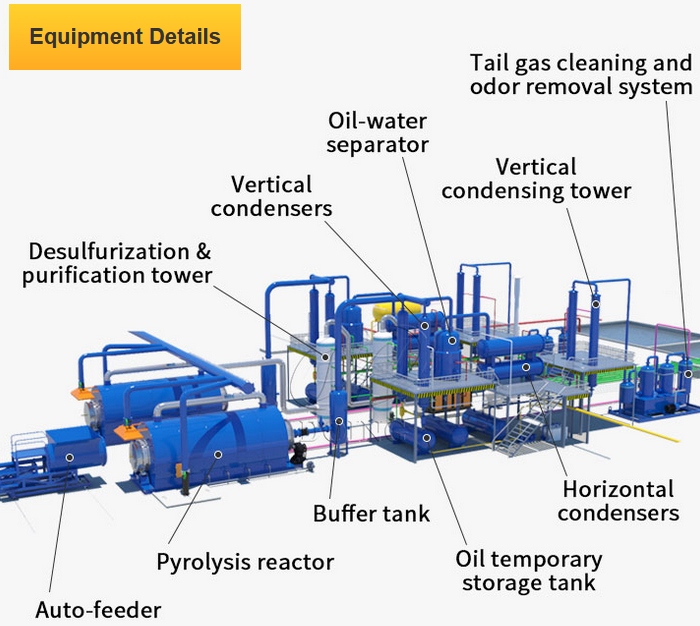
Composition of DOING batch type pyrolysis plant
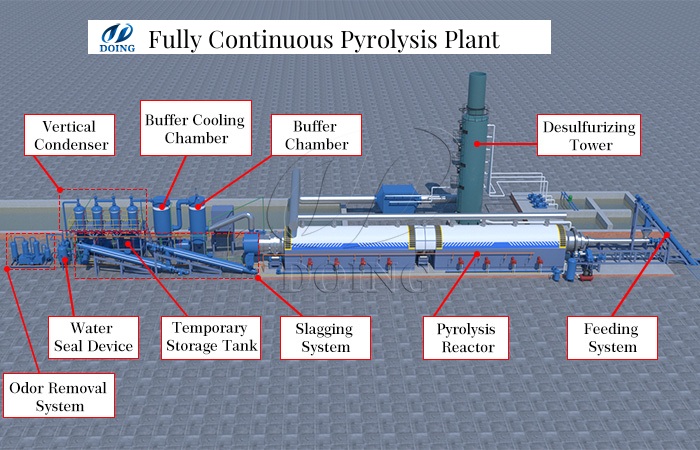
Composition of DOING fully continuous pyrolysis plant
Process: Raw Material Preparation: Batch tire to oil recycling lines can directly perform tire pyrolysis. Continuous tire to oil recycling lines require waste tires to be sorted, bead removed, and shredded to the appropriate size before pyrolysis begins. To improve processing efficiency, the steel wire can be pre-separated from the tires.
Purpose: Prepare tire feedstock suitable for consistent pyrolysis; maximize heat transfer efficiency and minimize equipment wear.
Primary components:
Tire shredder / granulator
Reduces tires to chips of 5 - 80 mesh or finer, depending on design. The rubber powder feed of continuous pyrolysis equipment needs to be 8-16 mesh.
Steel Wire Separator
This separates steel wire from tires, enhancing pyrolysis efficiency.
Magnetic separator: removes metal fragments from shredded tires.
Feeding hopper and screw feeder: Provides stable, controllable feed for continuous pyrolysis equipment. Batch pyrolysis equipment does not have this feature, but can be equipped with an automatic feeder if needed.
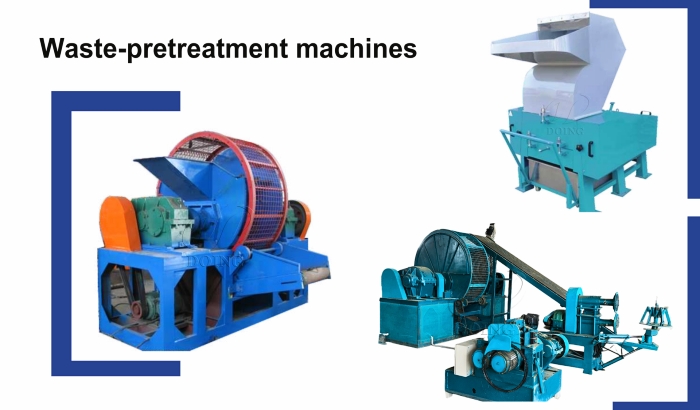
DOING pyrolysis plant waste-pretreatment machines
Process: Pyrolysis: The temperature is 400-550°C in an oxygen-free environment. The reactor is typically a horizontal rotary type. Heating can be external (natural gas, diesel, LPG, wood, etc.), or the syngas produced during the pyrolysis process can be recycled to improve energy efficiency.
Purpose: This is the core of the entire tire to oil recycling line, breaking down organic matter in tires into oil, gas, and carbon black under high-temperature, oxygen-free conditions.
Pyrolysis Reactor
DOING Group utilizes advanced horizontal rotary pyrolysis reactors, offering the following key advantages:
Continuous feeding and discharging (optional): Select models of pyrolysis equipment enable continuous or semi-continuous production, improving efficiency.
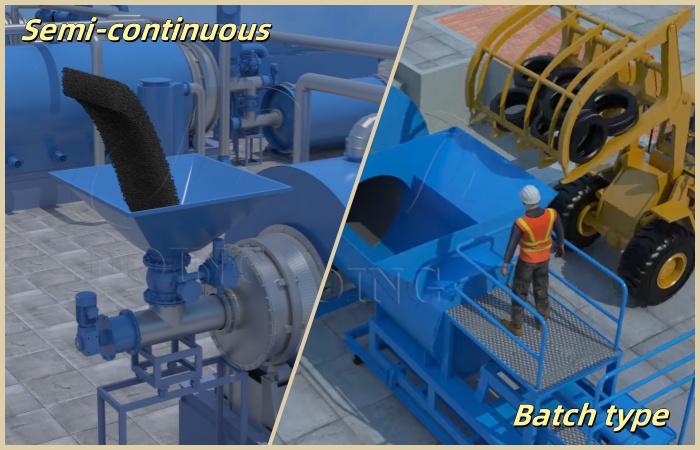
DOING tire to oil pyrolysis recycling line feeding system
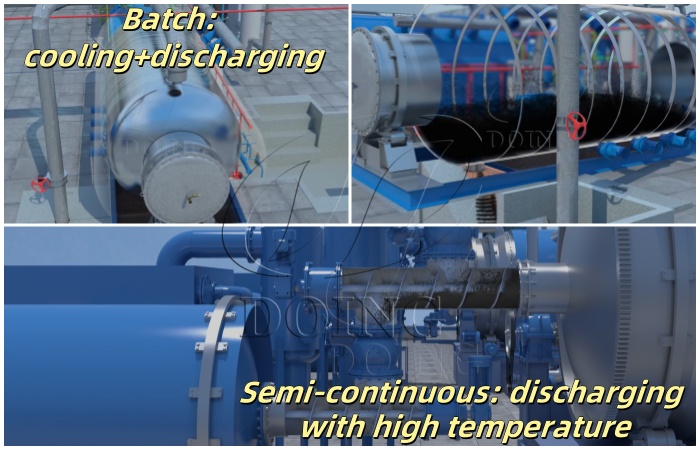
DOING tire to oil pyrolysis recycling line discharging system
Uniform heating: The rotation function ensures uniform heating of the rubber, effectively improving cracking efficiency and oil quality.
Efficient heat transfer: Direct or indirect heating, combined with an efficient heat transfer structure, reduces energy consumption.
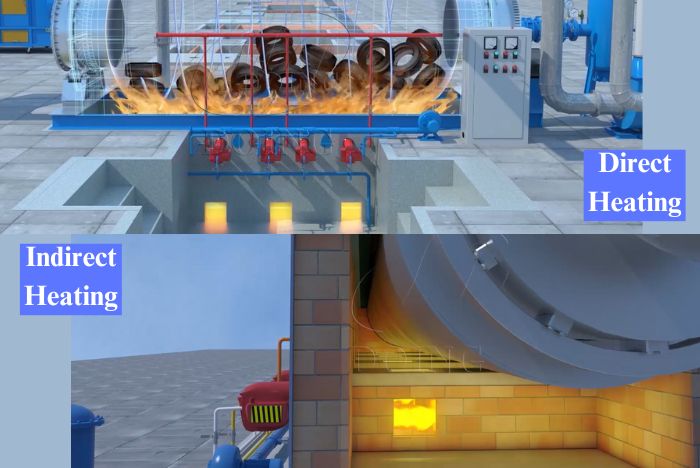
DOING tire to oil pyrolysis recycling line heating system
Material: Made of high-strength, high temperature resistant, and oxidation-resistant special steel (such as Q345R, Q245R), lined with fire-resistant and heat-insulating materials, the reactor is constructed to ensure longevity and safety.
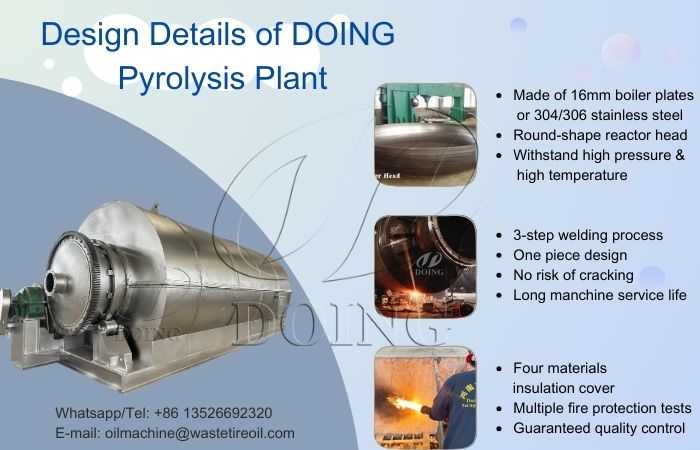
Design details of DOING pyrolysis recycling plant
Process: Condensation and Oil Recovery: The pyrolysis vapors are cooled and condensed into liquid pyrolysis oil. Condensation efficiency is typically between 85-90%, depending on the design and operating conditions.
Purpose: Condense volatile oil vapors into liquid pyrolysis oil.
Gas Processing and Recovery
The non-condensable syngas is recovered and, where feasible, used as fuel to heat the pyrolysis reactor.
Multi-Stage Condensers
Typically employs a multi-stage vertical or horizontal condenser combined with an efficient water circulation cooling system. DOING Group's condensing system is well-designed, ensuring maximum oil recovery.
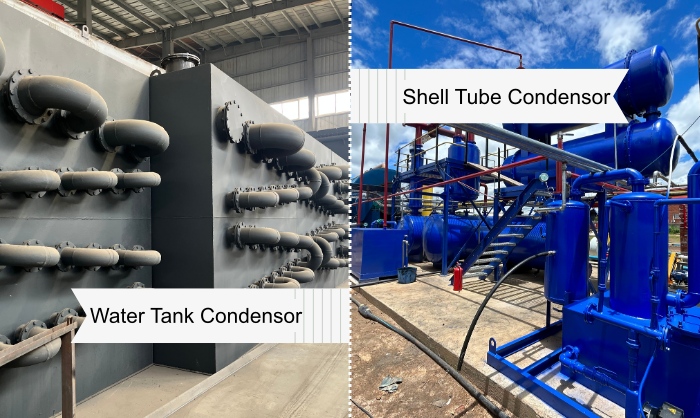
DOING pyrolysis recycling plant condenser systems
Oil-Water Separator
Separates condensate into oil and water phases; oil is routed to storage after filtration.
Vacuum System (Optional)
Lower the boiling point of certain condensable components to enhance oil yield and quality.
Process: Product Processing: The pyrolysis oil is stored in tanks. The carbon black is collected and processed; the steel wire is separated and collected for sale or reuse.
Non-Condensable Gas Recovery System
Purpose: Collects uncondensed syngas and recycles it to heat the reactor (self-sustaining energy).
Benefits: Improves energy efficiency, reduces fuel consumption, and lowers emissions intensity.
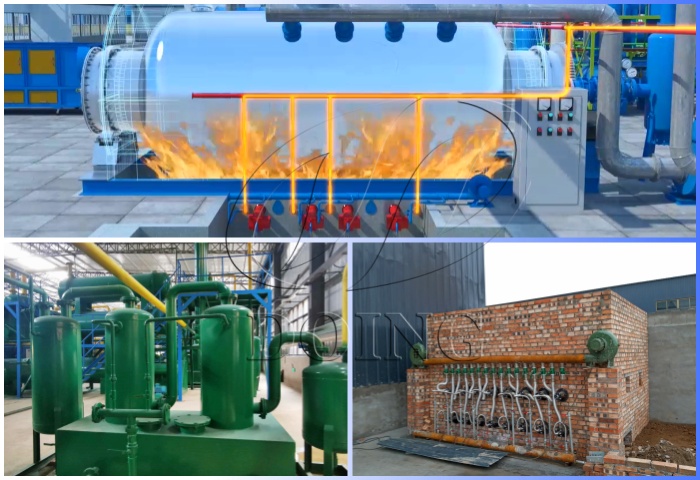
DOING pyrolysis recycling plant non-condensable gas recovery system
Pyrolysis Oil Storage Tanks
Stores liquid pyrolysis oil after condensation. Storage tanks must have safety measures such as anti-leakage and anti-static measures.
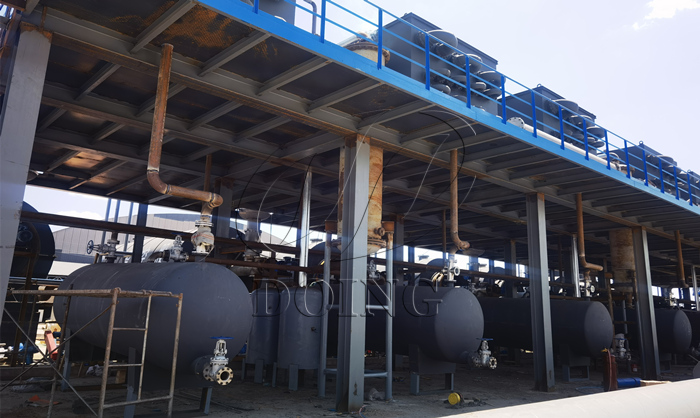
Pyrolysis oil storage tanks
Carbon Black Processing System (Optional)
Devices: Carbon black sealing and transportation system, carbon black briquetting machine
Purpose: Cool, collect, and process carbon black residue for sale or further upgrading.
Processes: Cooling, screening, milling or pelletizing (if required), dust control, packaging.
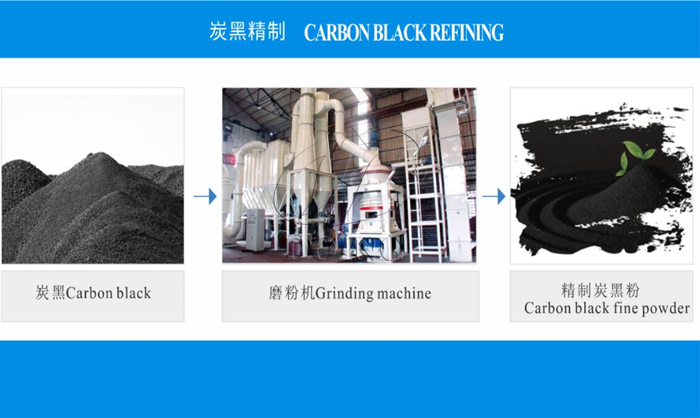
Carbon black grinding machine
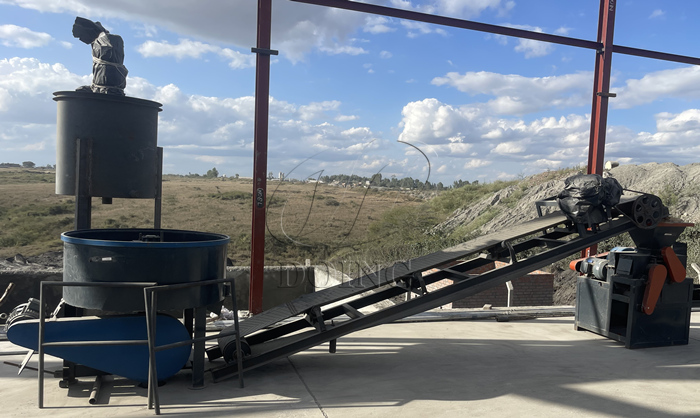
Carbon black briquetting machine
Steel Wire Collection System
Collects and stores separated steel wires.
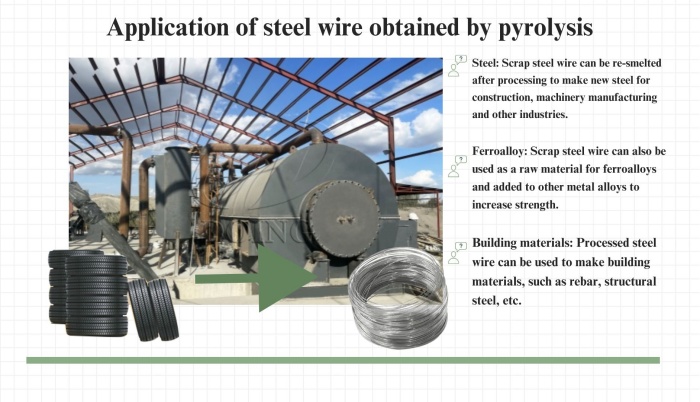
Application of steel wire obtained by pyrolysis
Process: Automation and Controls: A unified control system (PLC) monitors temperature, pressure, feed rate, safety interlocks, and energy balance to ensure stable and repeatable operation.
Control Panel / Automation System (Optional)
Core functions: Automated start/stop, temperature and pressure control, feed rate management, safety interlocks, alarms, data logging, and remote monitoring.
Hardware: PLC with HMI, sensors (temperature, pressure, level, gas detectors), actuators, interlocks, and networking for data acquisition.
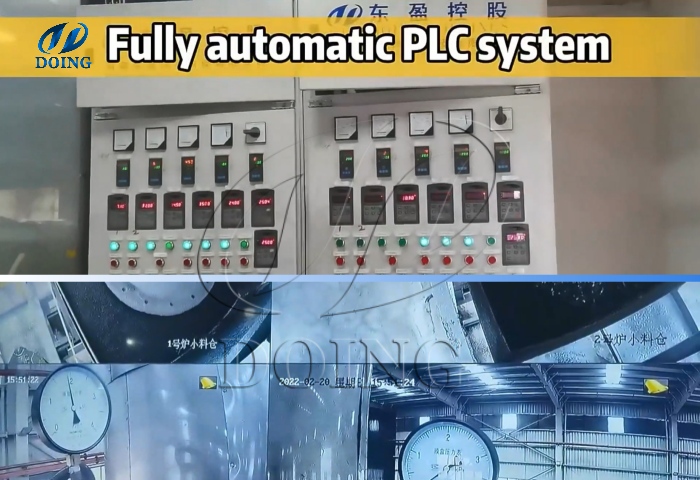
DOING tire to oil pyrolysis recycling line fully automatic PLC system
Safety Protection Devices
Includes pressure relief valves, emergency stop buttons, explosion-proof devices, liquid level sensors, temperature alarm systems, and more to ensure comprehensive equipment and personnel safety.
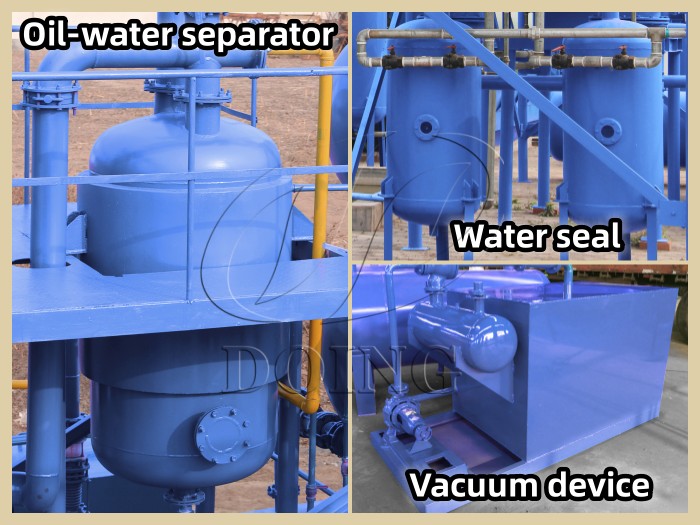
DOING tire to oil pyrolysis recycling line safety protection devices
Process: Environmental and Safety Controls: Emissions are managed through dust removal, sulfur/acid gas removal, and continuous monitoring to comply with applicable standards.
Cooling water system
A circulating cooling water tank provides circulating water for the condenser and related equipment.
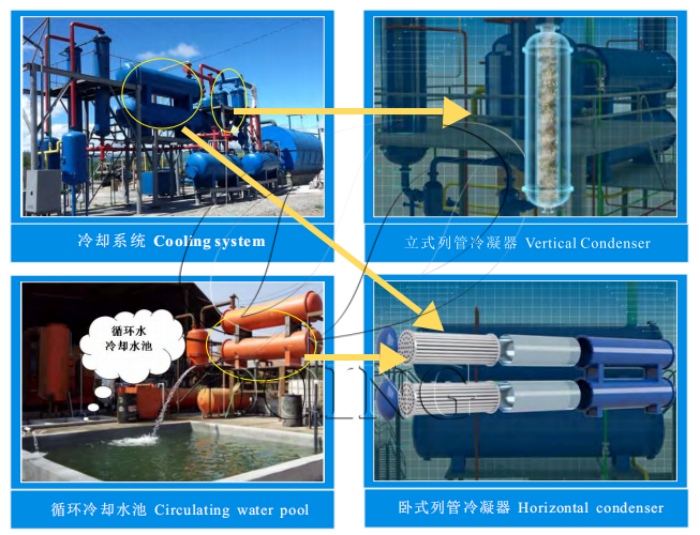
DOING tire to oil pyrolysis recycling line circulating cooling water system
Desulfurization and Dust Removal System(Desulfurization tower, spray tower)
Treat flue gas to meet environmental standards by removing sulfur compounds, acid gases, and particulates.
Typical arrangements
Acid gas scrubbing (alkaline scrubber) for HCl, SOx removal.
Dust collection via pulse dust collector.
Activated carbon adsorption for trace sulfur-containing compounds.
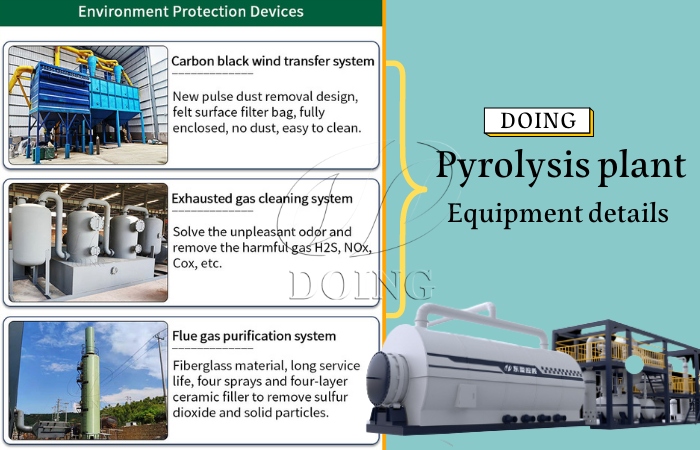
DOING tire to oil pyrolysis recycling line environment protection devices
Pyrolysis Oil Uses
Boiler Fuel: It can be used directly as fuel for industrial boilers, steam generators, and other applications, replacing some diesel and heavy fuel oil, significantly reducing fuel costs.
Heating Furnace Fuel: It can be used as fuel in production processes requiring high temperatures, such as cement plants, brick factories, and ceramic factories.
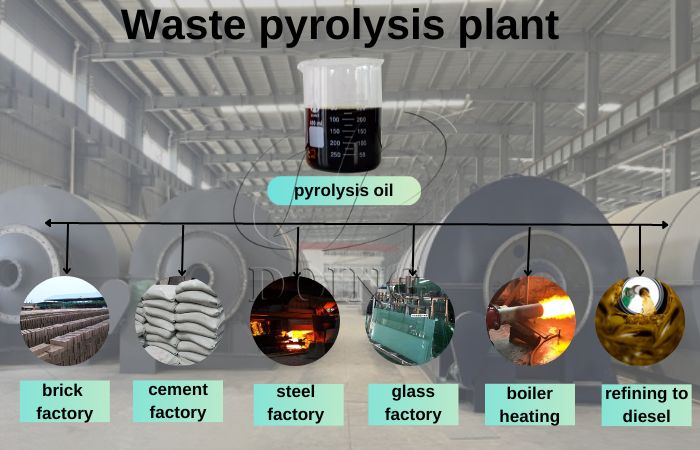
Applications of tire pyrolysis oil
Further Expansion
Pyrolysis Oil Refining Equipment: Tire pyrolysis oil can be further refined into diesel and asphalt, further expanding sales channels. The refined pyrolysis oil significantly improves its quality and offers a broad range of applications:
High-Quality Diesel Substitute: The refined light fraction closely resembles traditional diesel in composition and performance and can be used directly as diesel in:
Internal Combustion Engines: Automobiles, trucks, tractors, generators, and more.
Industrial Heating Equipment: It can replace diesel as a stable and efficient fuel.
Marine Fuel: It can be used as fuel when specific standards are met.
Asphalt: The heavy fraction, after processing, can be used as a key raw material in the production of road asphalt, waterproofing membranes, and other products, providing an environmentally friendly recycled material for the construction industry. Chemical raw materials: Certain specific fractions can be used as starting materials for synthetic rubber, plastics, dyes and other fine chemical products.
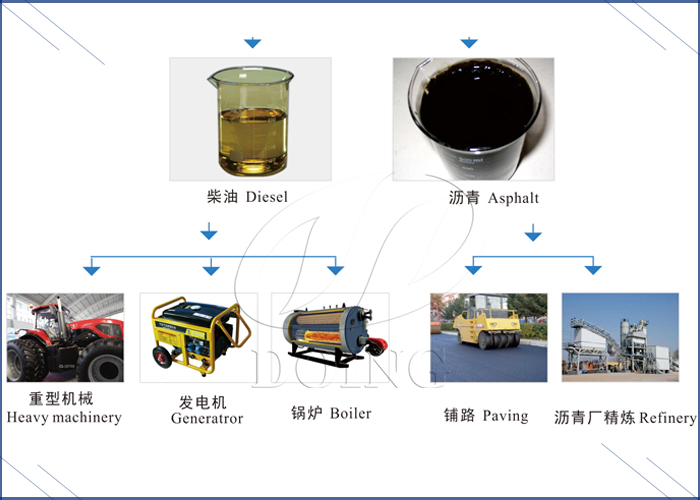
Applications of tire pyrolysis oil refined products
Leveraging years of industry experience and accumulated technical expertise, DOING Group provides global customers with sophisticated tire pyrolysis oil recycling lines. Our equipment is not only technologically advanced but also exceptionally energy-efficient and environmentally friendly.
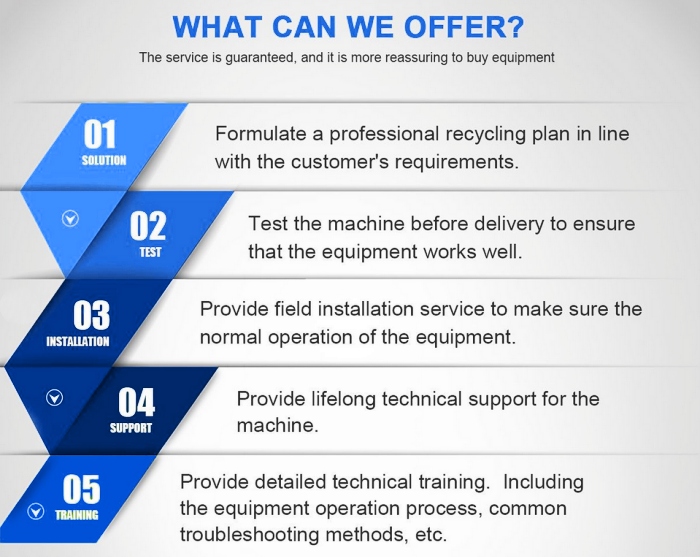
DOING tire to oil pyrolysis recycling line manufacturer services
If you are interested in our tire pyrolysis recycling lines, or would like to learn more about the production process, technical details, and return on investment, please feel free to contact DOING Group. We will be happy to provide you with professional consultation and service!
Please feel free to leave your contacts here and your privacy is protected. A competitive quotation will be provided according to your detailed requirement within one business day.